
views
Observing the Appearance
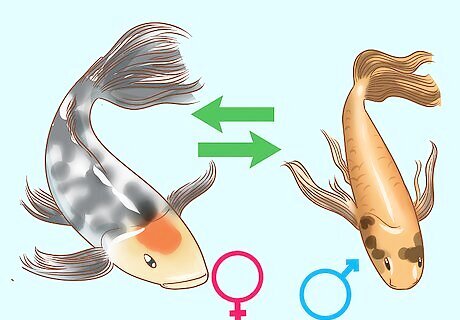
Compare the size of the fish during spawning season. With many fish, like koi, females tend to be larger than the males. This is especially true during spawning time, when females have large abdomens. To check the size of a fish in the same species, you can look at them when they're near each other, take a picture of each one, or catch one in a net to quickly use a ruler to measure its length and width. This is often caused by the fact that the female carries the eggs in her abdomen. Once the eggs are laid during spawning season, the females and males can return to the same size. If you catch a fish with a net to measure it, try to keep the fish in the water and place the ruler in the water to measure it. You will likely be able to get a general idea of the length and width. Another good indicator for determining the sex of a fish is the dorsal and anal fins—on male fish, they'll have more of a point on the end and will often be a bit longer.
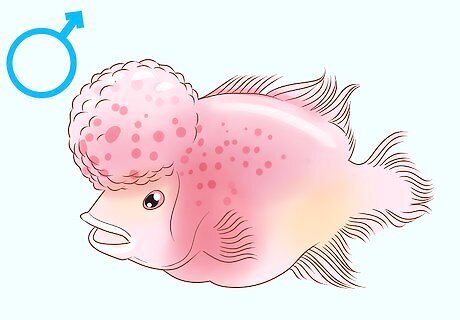
Look for a bump on the forehead of the fish to identify a male. Look carefully at the face of the fish just between the eyes and above the mouth. If it has a large, protruding bump, there's a good chance that the fish is a male. This bump is called a “nuchal hump,” and it's present on many types of fish, like the tilapia, angelfish, oscar, and discus. Some species of fish don't have a nuchal hump, but the presence of one is normally a great indicator that you have a male fish.
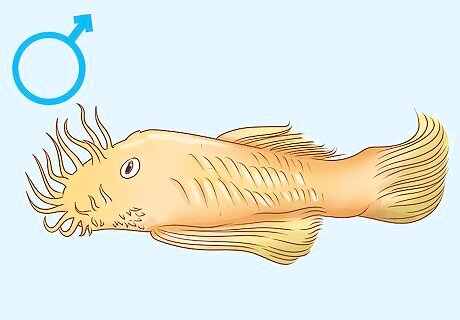
Watch for designs and growths during mating season. Male fish tend to grow bristles, bumps, or shiny scales during breeding season to attract females. Females can sometimes also grow these attributes, but the male versions tend to be larger and more pronounced to attract attention. For example, male pleco fish will grow long bristles on their pectoral fins and around the edge of their mouth and head. While females can grow similar bristles, theirs tend to be smaller.
Sexing Specific Species
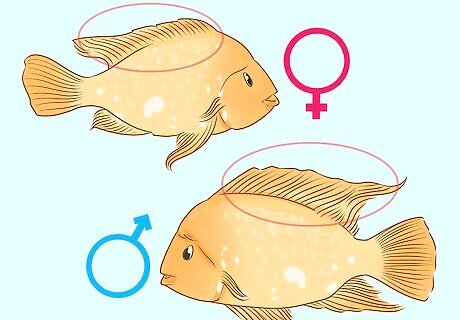
Compare the size of the dorsal fins on cichlid fish. In general, male cichlid fish have larger dorsal fins on their backs than their female counterparts. If you have multiple cichlids, look at the size of their fins when they are next to each other to identify which is the male and which is the female. Examples of cichlid fish include tilapia, angelfish, oscars, and discus.
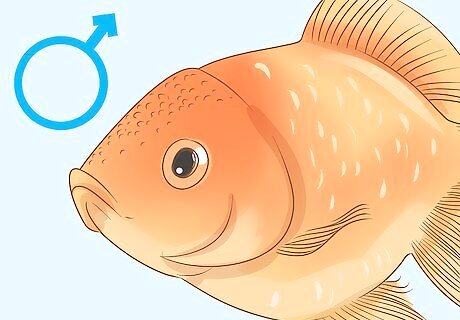
Watch for seasonal bumps on goldfish to identify a male. During the springtime, look at the forehead, gills, and pectoral fins of your fish. If you see small clusters of bumps in these areas, your fish is most likely a male goldfish. Don't wait too long, however, because these bumps are only present during the springtime, and will disappear when goldfish breeding season is over in the ear summer. The bumps can be various sizes, colors, and shapes, but tend to be concentrated in a few small areas on the fish.
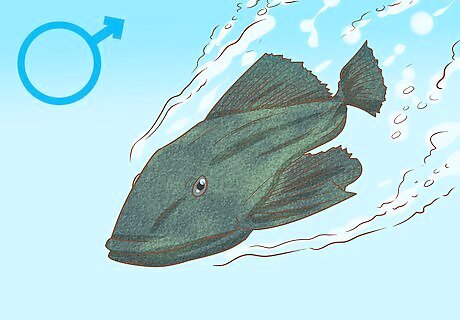
Look for aggressive pleco fish to identify the males. Male pleco fish can exhibit aggressive behavior toward other fish. Keep an eye out for plecos that swim quickly toward other fish that come near them to scare them off. If you have an aggressive pleco, it's most likely a male. Common names of pleco fish include algae suckers, janitor fish, and suckermouth catfish.
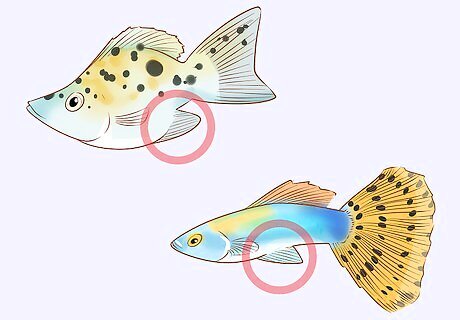
Spot triangular fins near the tail of guppies and mollies to identify a male. Toward the back of the fish, near the tail fin, you might be able to see a small fin in the shape of a triangle. This is called an “anal fin” and can be used for sexual reproduction. It might be hard to see this fin on smaller fish, so get your magnifying glass out if you have to! In addition to mollies and guppies, you can use a triangular anal fin to identify male swordtails, platies, and wags.
Consulting Other Resources

Visit a local pet store or hatchery to talk to an expert. If you're having difficulty determining the sex of your fish, go to a fish store or hatchery where you can purchase fish. Talk to an associate about the kind of fish that you have, and bring pictures of the fish if you can. They might be able to identify the sex for you, or direct you to someone who can help. While most pet store employees aren't trained on all of the types of fishes, they may have a fish expert who works in the store. Never remove your fish from your tank to take it to a store or hatchery. This can make the fish stressed, which can kill it. Hatcheries can also give you advice on how to breed your male and female fish to produce eggs during spawning season.

Consult online resources like informational videos and pictures. Search on YouTube for the species of fish that you have and the word “sexing” to see videos of experts and breeders identifying the different characteristics. This can help you get a visual idea of what to look for on male and female fish. Make sure you're watching videos about the species and types of fish that you have. It can be easy to get confused between videos!

Read about the types of fish that you have in your tank. Since there are so many different types of fish, it's best to start your research by looking up the fish that you have. Visit a local library to check out books like the Encyclopedia of Fish Physiology, which contains information about many different types of fish. Look for sections about classification and “sexing” fish. For example, if you have all tropical fish in your tank, you can check out a book about tropical fish.

Ask questions on online forums to get answers from fish enthusiasts. There are many online forums devoted to marine breeding, fish keeping, and tank setups. If you have a question about determining the sex of your fish, post pictures of the fish on the forum and ask the community members to help you out! Chances are, someone will have a good answer for you. Try to be as specific as possible in your post by including the species and type of fish, and label your pictures as necessary to ensure that anyone who sees them will know what they're looking at. Remember to check back on the forum frequently to see the answers from community members.

















Comments
0 comment